Filter by

YOUMARES 9 - The Oceans: Our Research, Our Future: Proceedings of the 2018 co…
This open access book summarizes peer-reviewed articles and the abstracts of oral and poster presentations given during the YOUMARES 9 conference which took place in Oldenburg, Germany, in September 2018. The aims of this book are to summarize state-of-the-art knowledge in marine sciences and to inspire scientists of all career stages in the development of further research. These conferences ar…
- Edition
- 1
- ISBN/ISSN
- 9783030203894
- Collation
- XIX, 370 hlm,: ill, lamp;
- Series Title
- -
- Call Number
- -

The European Landing Obligation: Reducing Discards in Complex, Multi-Species …
This open access book provides a comprehensive examination of the European Landing Obligation policy from many relevant perspectives. It includes evaluations of its impacts at economical, socio-cultural, ecological and institutional levels. It also discusses the feasibility and benefits of several potential mitigation strategies. The book was timely published, exactly at the time where the Land…
- Edition
- 1
- ISBN/ISSN
- 9783030033088
- Collation
- XIX, 431 hlm,: ill, lamp;
- Series Title
- -
- Call Number
- -

Habitats and Biota of the Gulf of Mexico: Before the Deepwater Horizon Oil Spill
This book is open access under a CC BY-NC 2.5 license. The Gulf of Mexico is an open and dynamic marine ecosystem rich in natural resources but heavily impacted by human activities, including agricultural, industrial, commercial and coastal development. The Gulf of Mexico has been continuously exposed to petroleum hydrocarbons for millions of years from natural oil and gas seeps on the sea f…
- Edition
- 1
- ISBN/ISSN
- 978-1-4939-3447-8
- Collation
- oer.unej.ac.id
- Series Title
- -
- Call Number
- 658

Maritime Spatial Planning: past, present, future
This open access book is the first comprehensive overview of maritime or marine spatial planning. Countries across the globe are beginning to implement maritime spatial plans; however the authors of this collection have identified several key questions that are emerging from this growing body of MSP experience. How can maritime spatial planning deal with a complex and dynamic environment such a…
- Edition
- 1
- ISBN/ISSN
- 9783319986968
- Collation
- XXXVII, 477 hlm; ill., lamp.,
- Series Title
- -
- Call Number
- -
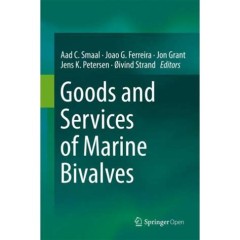
Goods and Services of Marine Bivalves
The aim of this open access book is to review and analyse the goods and services of bivalve shellfish. How they are defined, what determines the ecological functions that are the basis for the goods and services, what controversies in the use of goods and services exist, and what is needed for sustainable exploitation of bivalves from the perspective of the various stakeholders. The book is foc…
- Edition
- 1
- ISBN/ISSN
- 9783319967769
- Collation
- XXV, 591 hlm,: ill, lamp;
- Series Title
- -
- Call Number
- -
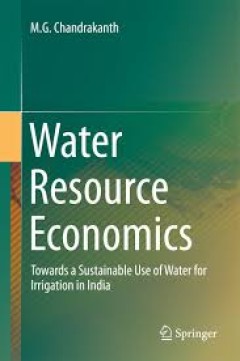
Water Resource Economics Towards a Sustainable Use of Water for Irrigation i…
This book uses resource economics costing approaches incorporating externalities to estimate the returns for the country’s irrigation and demonstrates how underestimating the cost of water leads farmers to overestimate profits. The importance of the subject can be judged in light of the fact that India is the largest user of groundwater both for irrigation and for drinking purposes, pumping t…
- Edition
- -
- ISBN/ISSN
- 978-81-322-2479-2
- Collation
- -
- Series Title
- -
- Call Number
- -

Water Quality Criteria Green Book of China
The book mainly introduces readers to the development and current status of water quality criteria (WQC) in China and other countries or areas, and proposes a minimum toxicity data requirement (MTDR; i.e., six species from three phyla) as the principle metric for deriving WQC in China. Further, ten model species from 4 different phyla are recommended as domestic test species, and the methodolog…
- Edition
- -
- ISBN/ISSN
- 978-94-017-7270-9
- Collation
- -
- Series Title
- -
- Call Number
- -
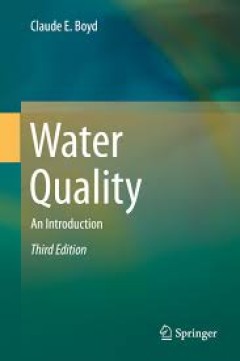
Water Quality An Introduction
The revised second edition updates and expands the discussion, and incorporates additional figures and illustrative problems. Improvements include a new chapter on basic chemistry, a more comprehensive chapter on hydrology, and an updated chapter on regulations and standards. This book presents the basic aspects of water quality, emphasizing physical, chemical, and biological factors. The s…
- Edition
- -
- ISBN/ISSN
- 978-3-319-17446-4
- Collation
- -
- Series Title
- -
- Call Number
- -
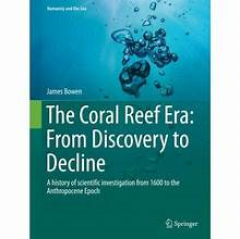
The Coral Reef Era: From Discovery to Decline
On 4 June 1629, the Batavia, pride of the Dutch East India Company Fleet, was wrecked on her maiden voyage in a seemingly empty expanse of the Indian Ocean. The question “how did this happen?” led to 300 years of investigation by those curious to solve the enigma: what are corals and how are coral reefs formed?. Relying heavily on primary source material Part 1 traces the sequential evol…
- Edition
- 1
- ISBN/ISSN
- 978-3-319-07479-5
- Collation
- XV, 195, 35 b/w illustrations
- Series Title
- Humanity and the Sea
- Call Number
- -
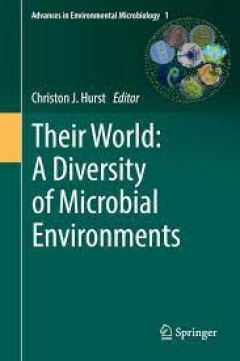
Their World: A Diversity of Microbial Environments
This volume summarizes recent advances in environmental microbiology by providing fascinating insights into the diversity of microbial life that exists on our planet. The first two chapters present theoretical perspectives that help to consolidate our understanding of evolution as an adaptive process by which the niche and habitat of each species develop in a manner that interconnects individua…
- Edition
- -
- ISBN/ISSN
- 978-3-319-28071-4
- Collation
- -
- Series Title
- -
- Call Number
- -
 Computer Science, Information & General Works
Computer Science, Information & General Works  Philosophy & Psychology
Philosophy & Psychology  Religion
Religion  Social Sciences
Social Sciences  Language
Language  Pure Science
Pure Science  Applied Sciences
Applied Sciences  Art & Recreation
Art & Recreation  Literature
Literature  History & Geography
History & Geography